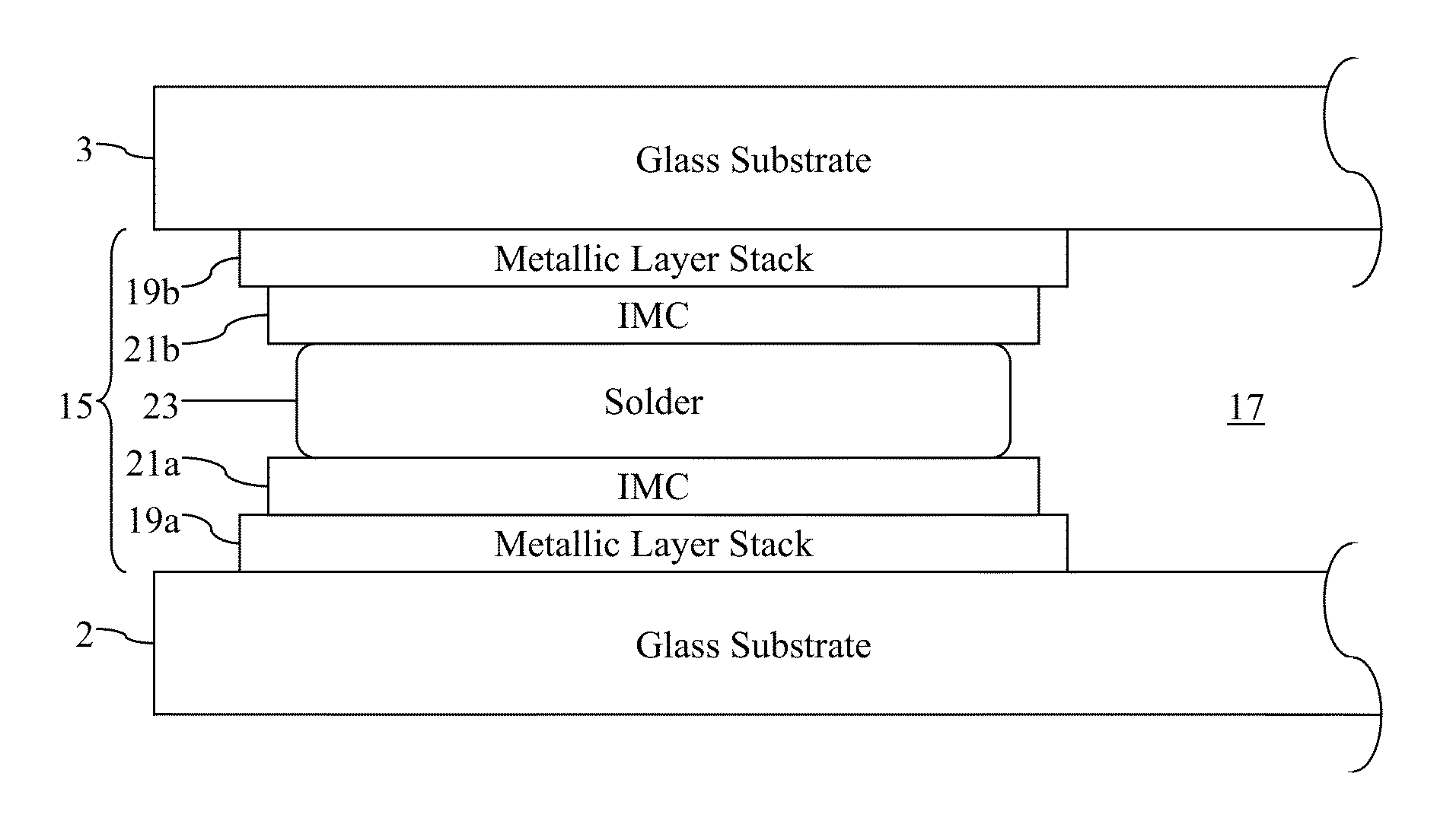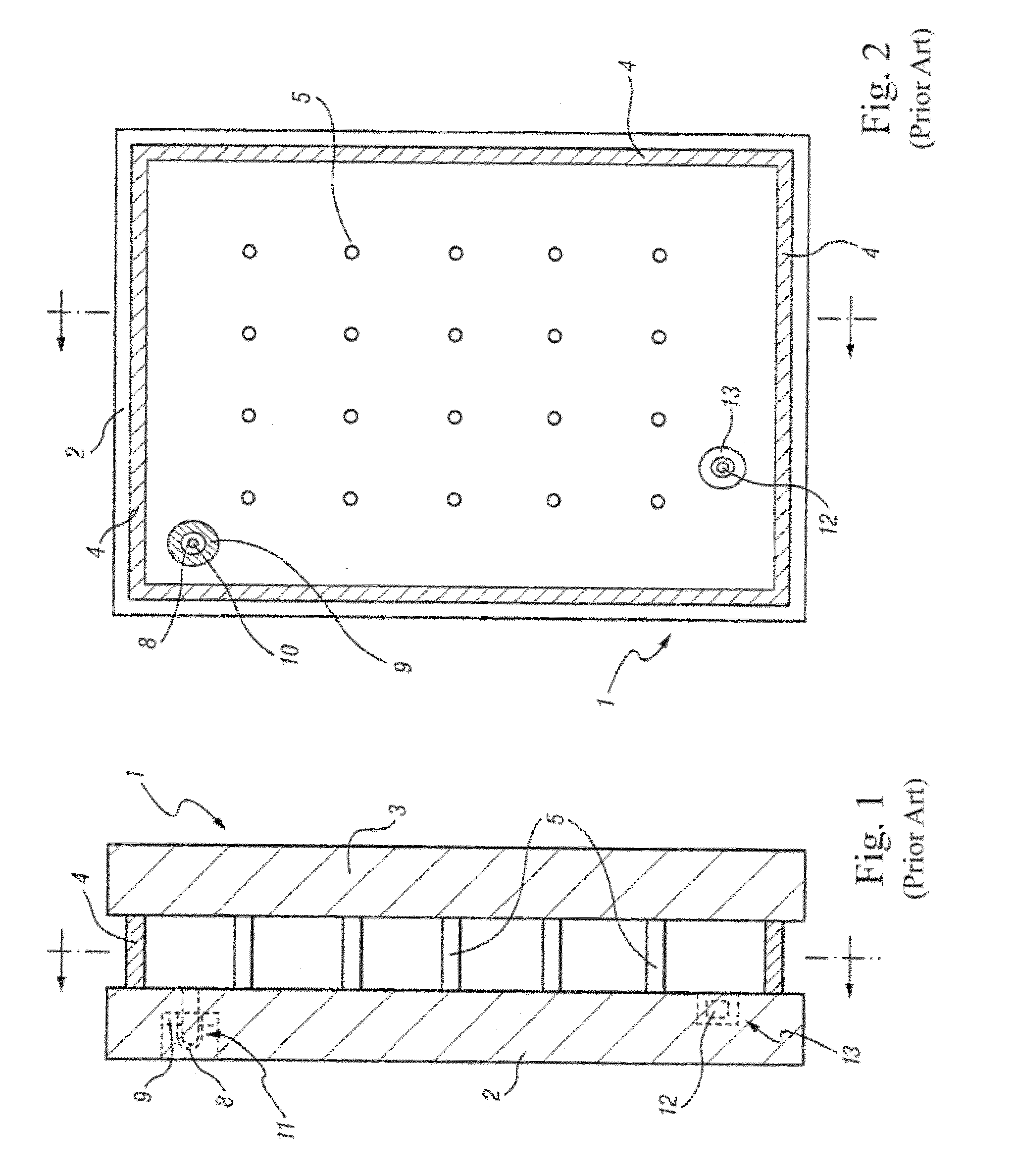Vacuum insulating glass (VIG) unit with metallic peripheral edge seal and/or methods of making the same
a technology of vacuum ionization glass and peripheral edge, which is applied in the direction of parallel plane units, doors/windows, building components, etc., can solve the problems of requiring a relatively long time to achieve an acceptable seal, unable to meet the requirements of high-temperature sealing processes discussed above, and not suitable for fabricating heat-sensitive components such as, for example, tempered vig units and encapsulating sensitive components
- Summary
- Abstract
- Description
- Claims
- Application Information
AI Technical Summary
Benefits of technology
Problems solved by technology
Method used
Image
Examples
Embodiment Construction
[0030]Certain example embodiments relate to a vacuum insulating glass (VIG) unit provided with a metal-inclusive peripheral edge hermetic seal, and / or methods of making the same. The primary material used in forming the edge seal is based on a metallic solder pre-form alloy that, when reactively reflowed, wets a metallic coating pre-coated on the glass substrates' perimeters. The use of these techniques advantageously permit low processing temperatures, e.g., through the careful selection of solder-coating combinations. This may in certain example embodiments advantageously allow thermally tempered glass to be used in VIG units without significantly sacrificing the temper strength of the glass during the fabrication process, permit sputtered soft low emissivity (low-E) coatings to be used, enable thin film getter materials to be provided, etc. In certain example embodiments, it advantageously becomes possible to form a vacuum without the use of a pump-out tube or the like.
[0031]More...
PUM
| Property | Measurement | Unit |
|---|---|---|
| thick | aaaaa | aaaaa |
| thick | aaaaa | aaaaa |
| pressure | aaaaa | aaaaa |
Abstract
Description
Claims
Application Information
 Login to View More
Login to View More - R&D
- Intellectual Property
- Life Sciences
- Materials
- Tech Scout
- Unparalleled Data Quality
- Higher Quality Content
- 60% Fewer Hallucinations
Browse by: Latest US Patents, China's latest patents, Technical Efficacy Thesaurus, Application Domain, Technology Topic, Popular Technical Reports.
© 2025 PatSnap. All rights reserved.Legal|Privacy policy|Modern Slavery Act Transparency Statement|Sitemap|About US| Contact US: help@patsnap.com



